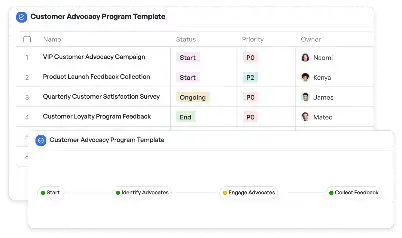Data Labeling Accuracy Improvement Plan
Achieve project success with the Data Labeling Accuracy Improvement Plan today!

What is Data Labeling Accuracy Improvement Plan?
The Data Labeling Accuracy Improvement Plan is a structured framework designed to enhance the precision and reliability of labeled datasets, which are critical for training machine learning models. In the context of artificial intelligence, data labeling involves annotating raw data such as images, text, or videos to make it usable for algorithms. However, inaccuracies in labeling can lead to flawed model predictions, making accuracy improvement a top priority. This plan provides a systematic approach to identify errors, implement quality checks, and refine labeling processes. For instance, in industries like healthcare, mislabeled medical images can lead to incorrect diagnoses, highlighting the importance of this plan. By incorporating best practices, such as inter-annotator agreement and automated validation tools, the plan ensures that labeled data meets the highest standards of quality.
Try this template now
Who is this Data Labeling Accuracy Improvement Plan Template for?
This template is ideal for data scientists, machine learning engineers, and project managers who oversee data annotation projects. It is particularly useful for organizations in industries like healthcare, autonomous vehicles, and e-commerce, where high-quality labeled data is essential. For example, a healthcare company labeling X-ray images for disease detection or an e-commerce platform categorizing product images for better search results can benefit immensely. Typical roles include data annotators, quality assurance specialists, and AI researchers, all of whom can use this plan to streamline their workflows and achieve better outcomes.

Try this template now
Why use this Data Labeling Accuracy Improvement Plan?
The primary advantage of using this plan is its ability to address specific pain points in data labeling projects. For instance, inconsistent labeling guidelines often lead to discrepancies in datasets, which this plan mitigates by standardizing annotation protocols. Another common issue is the lack of feedback loops between model performance and labeling quality; this plan integrates iterative feedback mechanisms to continuously improve data quality. Additionally, it tackles the challenge of scaling annotation efforts without compromising accuracy by introducing automated quality checks and efficient task allocation. By focusing on these unique challenges, the plan ensures that organizations can produce datasets that are not only accurate but also scalable and reliable.

Try this template now
Get Started with the Data Labeling Accuracy Improvement Plan
Follow these simple steps to get started with Meegle templates:
1. Click 'Get this Free Template Now' to sign up for Meegle.
2. After signing up, you will be redirected to the Data Labeling Accuracy Improvement Plan. Click 'Use this Template' to create a version of this template in your workspace.
3. Customize the workflow and fields of the template to suit your specific needs.
4. Start using the template and experience the full potential of Meegle!
Try this template now
Free forever for teams up to 20!
The world’s #1 visualized project management tool
Powered by the next gen visual workflow engine




